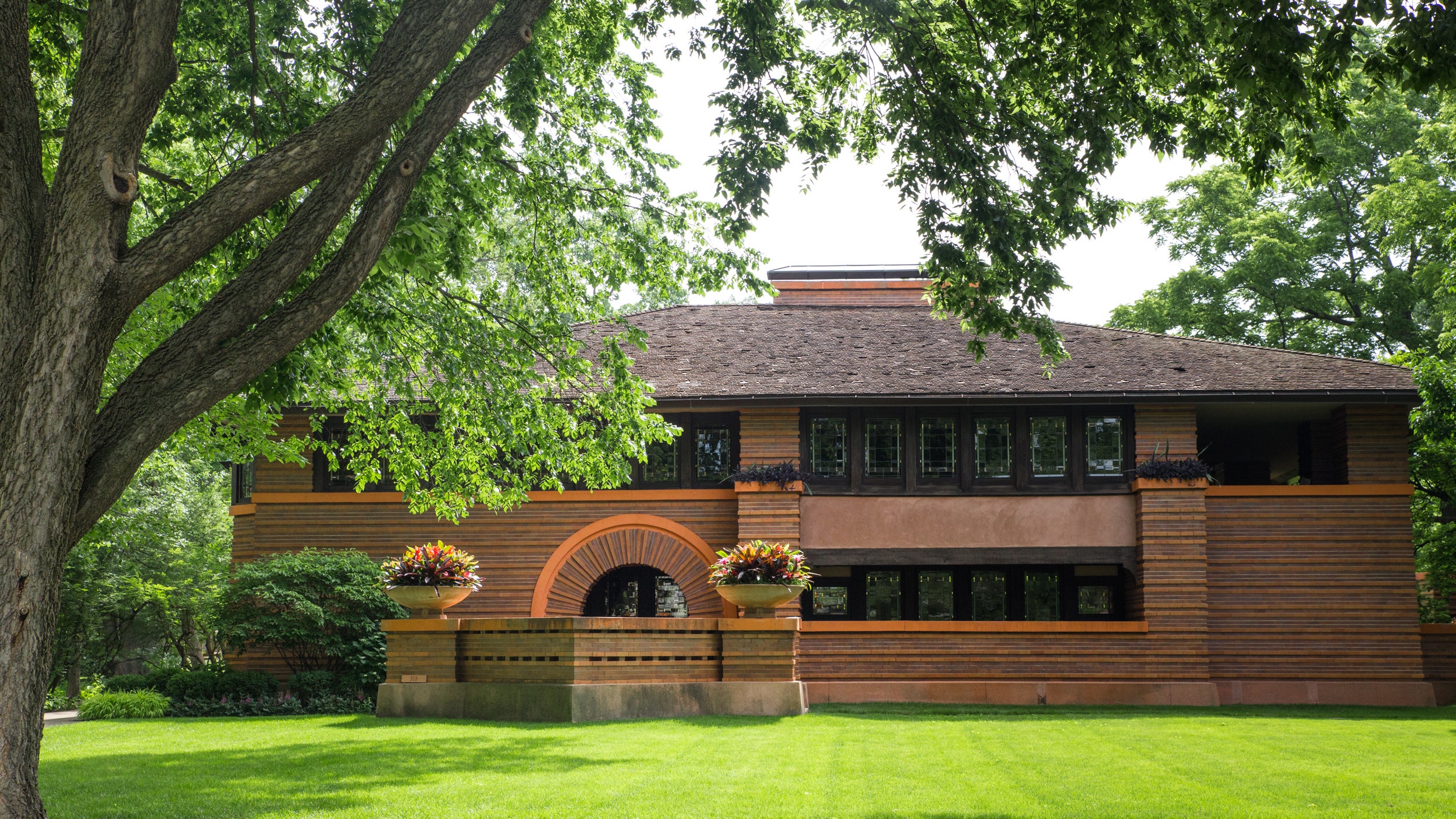Frank Lloyd Wright’s most recognized designs are the stark white, tubular-shape Guggenheim Museum on Manhattan’s Upper East Side and Fallingwater in rural Pennsylvania, where a waterfall literally runs through the home he designed for a department-store magnate in 1935. These grace puzzles and calendars, as proof they are now commercially known. Yet, to really understand Wright’s ethos, it’s also important to study the 800-acre Taliesin in Spring Green, Wisconsin. At his 37,000-square-foot home, school, and studio, Wright could freely design new concepts and not risk client dissatisfaction. He designed to human scale (Wright was around 5'7"), did open floor plans, a cantilevered roof, and brought the outdoors in with walls of windows, as neighbors were non-existent and he was the home’s inhabitant.
The bulk of Wright’s Wisconsin homes fall under two timelines: 1902-1917 (including six American System-Built Homes on a Milwaukee block) and 1937-1959 (including his first Usonian: the Herbert and Katherine Jacobs I house in Madison, completed in 1937).
Wright was born in nearby Richland Center on June 8, 1867, two weeks before the summer solstice’s light would flood the upper Midwest. Like Spring Green, Richland Center is within the Driftless Area, home to one of the largest concentrations of organic farms in the US with 200 certified-organic farms in Vernon County alone and an hour north of Taliesin. (Fun fact: 300 certified-organic acres are also at Taliesin, where architectural fellows once harvested strawberries and potatoes.)
Living on 800 acres with multiple generations of his family, there was no shortage of green space—and he drew upon this pastoral surrounding in his designs. “At Taliesin, the story began long before Wright,” explained Caroline Hamblin, program-services manager who has lived at Taliesin since arriving from Germany in the 1980s, on a recent behind-the-scenes tour for Wright in Wisconsin members. “And [it] really deeply influenced Wright. It was the only place not flattened during the Ice Age and (home to) some of the most ancient prairie species, even today.”
This urge to preserve—not destroy—nature runs deep in Wright’s commissions. The Herbert and Katherine Jacobs II House in Madison, Wisconsin, (completed in 1948) is built into a grassy hill and a solar-hemicycle design. A roof overhang invites warmth in winter but blocks heat from reaching beyond the window wall in summer.
Back at his Taliesin home, Wright removed interior walls and created walls of windows to further frame nature views. He also played around with light. “What Wright knew how to do is bring in light from different angles and up high,” Hamblin says. Never did he coax direct light into a living space.
Even before that Usonian Style, he detoured from convention and placed the “front door” on the side of the home, partially concealed, forcing the visitor to experience landscaping and a quieter spot than the bustling sidewalk before entering. This side entrance also created an opportunity for his compression-and-release style of architecture, where a low entryway led to a room with high ceilings.
Another mantra of Wright’s, organic architecture—where the project’s built in harmony with the site—clearly stems from living on 800 acres. There isn’t a home he designed where nature’s not peering in, whether through walls of windows in the living room or clerestory windows in a hallway. In his studio in Oak Park, Illinois, a willow tree was not sacrificed: an interior passageway was built around it. And at Wingspread, a 14,000-square-foot home built for the Johnson family (of S.C. Johnson fame) in Wind Point, Wisconsin, in 1939, Wright came up with a new fireplace design. Why not have birch logs the height of the two-story fireplace stretching vertically into the air—instead of calmly lying horizontally? (This worked well until those logs started to burn and risked falling into the room.)
Pushing boundaries like this was normal to Wright, such as when parishioners from Milwaukee’s Annunciation Greek Orthodox Church visited him at Taliesin to discuss the design he’d drafted. Here’s your church, he reportedly quipped, placing a saucer on top of a teacup, not at all different from what one sees today in the 1961 design.
In a letter titled “Why I Love Wisconsin” that published in Wisconsin Magazine in 1932, Wright wrote, “I, too, am by birth and nature a Wisconsin radical. Radical is a fine word meaning ‘roots.’ Being radical I must strike root somewhere. Wisconsin is my somewhere. I feel my roots in these hillsides and I know those of the oak that have struck in here beside me. The oak and I understand each other.”

